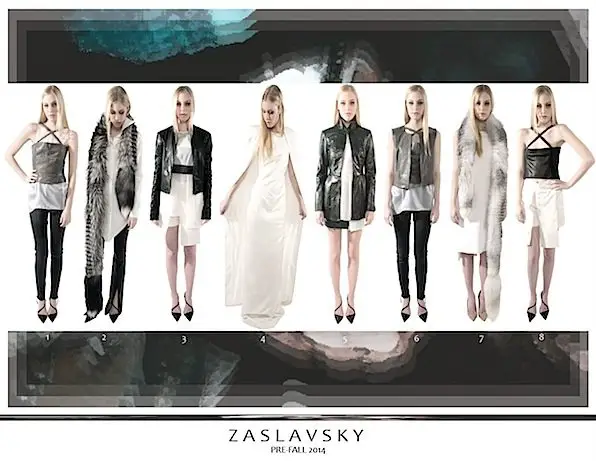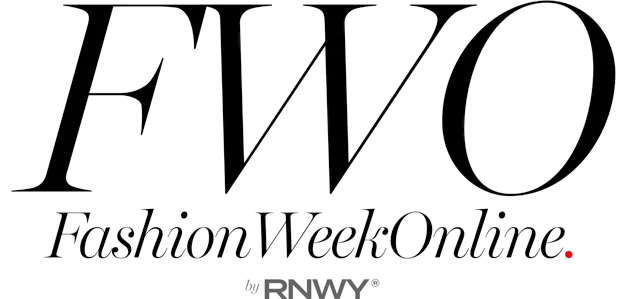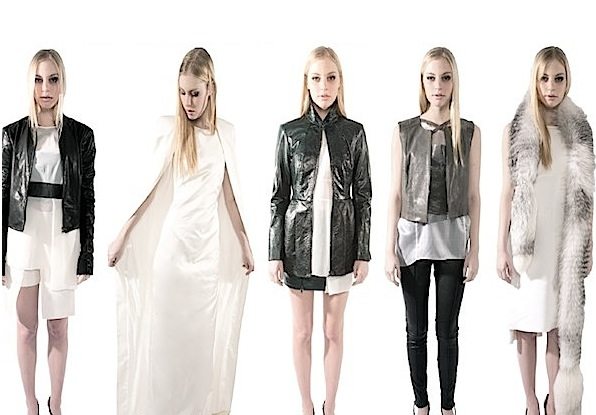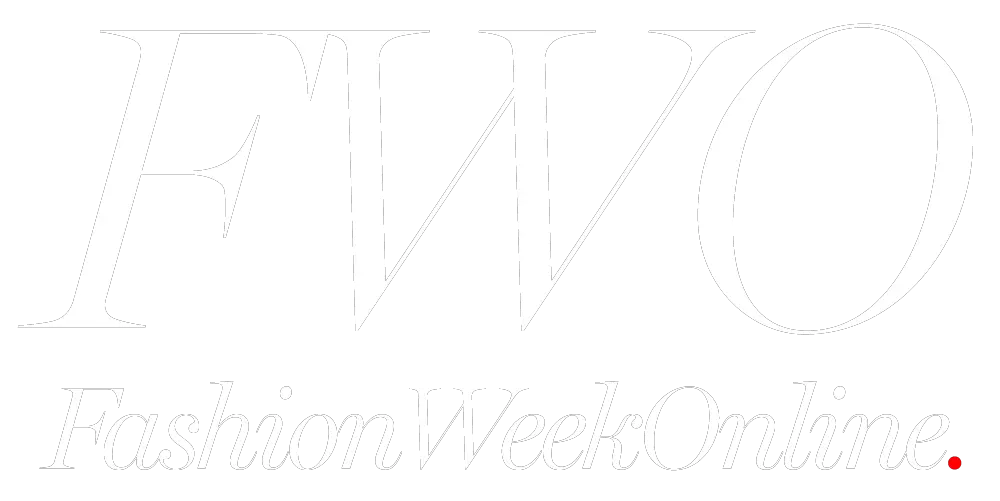Introducing Danielle Zaslavskaya
Danielle Zaslavskaya is being hailed as a young designer to watch, having worked closely with Italian factory MASSARDI, whose client list includes Dolce & Gabbana, Rick Owens, Y-3, and Roberto Cavalli.
[portfolio_slideshow id=1183 width=”450″]
Q: What does fashion mean to you?
It’s not what fashion means, but what fashion does. It evokes feelings and sometimes the most memorable of memories.
It’s not what fashion means, but what fashion does.
Q: When did you realize you wanted to become a fashion designer?
At nine years old. I use to draw paper dolls and draw different outfits for them, that I would cut out and paper clip to their bodies. I think it also stemmed from the numerous amounts of overstuffed boxes with Barbie clothes that filled most of my bedroom floor. It was then I realized I was destined to become a fashion designer.
Q: What was the first article of clothing you ever designed?
A shift dress from a pattern I bought at a fabric store. I was trying to make a dress for my freshman year homecoming dance. The dress turned out horrible; I sewed the wrong pieces together and the seams weren’t straight. Shortly after, I took a fashion design and sewing class in my High School. My art began to escalate as I began to grow and establish an individual look.
I sewed the wrong pieces together and the seams weren’t straight.
Q: You’ve been called a young designer to watch in some circles. Are you feeling any pressure or are you ready for the stage?
I’m beyond ready! I see my vision and I know my customer. My imagination is constantly flowing with ideas. I have visions with beautiful caftans flowing in the wind and stampedes of long legged women walking around cobblestone streets of Moscow, wearing my fox stoles. The creative process never stops and it never will.
I see my vision and I know my customer.
Q: Describe the general process you go through to design and realize a piece of clothing.
I’m always pulling images from The New York Public Library and using some of my own photos that I take at random moments in my life.
I love scanning them and then layering them and distorting them in Photoshop and Illustrator to see how far I can push something literal into something figurative. After that, it helps me figure out the tone and season I will be focusing on.
I tend to work backward, and design the clothing without knowing my set color and fabric story. Once I draw up fifty potential looks, I go rummaging in the garment district for hours looking through piles of fabrics in the stores. It always easier for me that way, because having my fabric swatches first limits me in silhouette ideas. It’s always easier to go back in and make adjustments.
Once I draw up fifty potential looks, I go rummaging in the garment district for hours.
Q: Who are some of your favorite designers now?
I’ve always been an admirer of Ralph Lauren and his clean-stylized lines and silhouettes. His style really took on a lot in my design decisions, which lead me to discover Phoebe Philo, Stella McCartney, Raf Simons and Azzedine Alaia. They most influence me because they’re able to take basic structured silhouettes and transform them into beautiful ensembles that highlight the many personalities of a woman.

Q: How long have you worked as a designer?
I’ve been designing since I was in high school. My mother found a magnate school in Miami called Design and Architecture Senior High.
They specialized in many different programs, one of them being fashion. I took classes for three years and learned a tremendous amount about fashion, as well as myself. I guess you can say it was love at first stitch. The school opened up many doors and opportunities, letting me show for Miami Fashion Week and Art Basel.
Later, I went to Parsons The New School for Design and really developed myself as a designer. I recently graduated from there with a BFA and a kick-ass thesis collection.
Q: What do you believe makes a quality article of clothing?
Compromise and sleepless nights.
Q: Do you consider yourself an artist?
Yes. I go through the same processes in designing clothing that an artist goes through creating any other piece. I’m always critiqued and never know how I will be received; there’s a rush and sense of urgency in that. I think most artists would agree.
Q: What’s your favorite part about conceptualizing a design?
I come up with ideas all the time, and sometimes there’s a struggle, because I’m not sure which ideas and elements I want to use in my concept. Sometimes I don’t want to overdo it, but then there’s always that part of me that’s scared to save an idea for another season, because someone else might think of it.
When I do figure out the main concept, I love too see how my interpretation of it changes through many months of work. Your “a-ha” moments become the pivotal turning points in your career.
Q: What advice do you have for aspiring fashion designers?
Always trust yourself and never compare yourself to another designer. The easiest way to fail and let yourself down is by thinking someone is better than you, or is able to create exquisite pieces that you can never come up with. Always remember, there’s that one person who will appreciate and love your work, and that ONE is all you need..
All you need is that ONE person who will appreciate and love your work.
Q: What do you like best and dislike most about designing clothes?
The best thing about designing clothes is being able to take your expressions out on fabric. What I dislike most about designing is when I have to cut back certain looks and ideas. When I’m working hard, I always want to show everyone all the things I’ve come up with. The problem when you’re making a collection is, there needs to be consistency between the color story and the silhouettes.
The problem when you’re making a collection is, there needs to be consistency between the color story and the silhouettes.
Q: How would you define your personal style and the style your line exemplifies?
In some cases I am my own customer, but that really depends on the season. I really love to dress myself in the fall and winter.
There’s something whimsical about being able to drown your body in fabric and accessories. Sweater, coats, fishnets, hats, rings, and boots all lend themselves to my personal style.
I also think people are more attractive during the cold months because everyone looks fresh, hair dues always stay, skin is always clean and people are forced to put more effort into their dressing habits, because outfits can easily look more repetitive.
I think the layering stays consistent in my line no matter what season it may be. I do wear floral and lots of color during the summer months, but my line lacks those elements because my customer is more about playing with layers and tactile fabrics.
Q: What are some of your fashion goals? Life goals?
My goals are never-ending; there are so many things I can’t wait to dip my feet into. My main interests do lie in fashion and I hope to launch my brand soon and open a store in New York and Miami. My best friends and I also started a separate brand called ‘Zero Characters,’ that will launch in Spring 2014.
It’s a collaborative line that focuses on street wear and joining the many characters, personalities, religions and pop culture that make up New York.
Q: Where do you get your inspiration?
Most of my inspiration comes from my travels and people I’ve met.
The places that have influenced my inspiration the most have been Kiev, Israel, Copenhagen, and Paris.
I can tell you one thing; I always go back to modern Russian culture and get my source of inspiration from women in society. Women like Miroslava Duma, Ulyana Sergeenko, Vika Gazinskaya and Oxana On have all filled my sketchbook pages.
Russian women really maintain their appearances and always overdress, which makes them fabulous. Growing up in the Ukraine, you’ll never see a woman in the grocery store without heels and make-up on. It’s always such an orchestrated event.
I always go back to modern Russian culture and get my source of inspiration from women in society
##
ABOUT EGOMELI HORMEKU
Egomeli is Editor in Chief of Fashion Week Online, and creator of The Hormeku Group.



